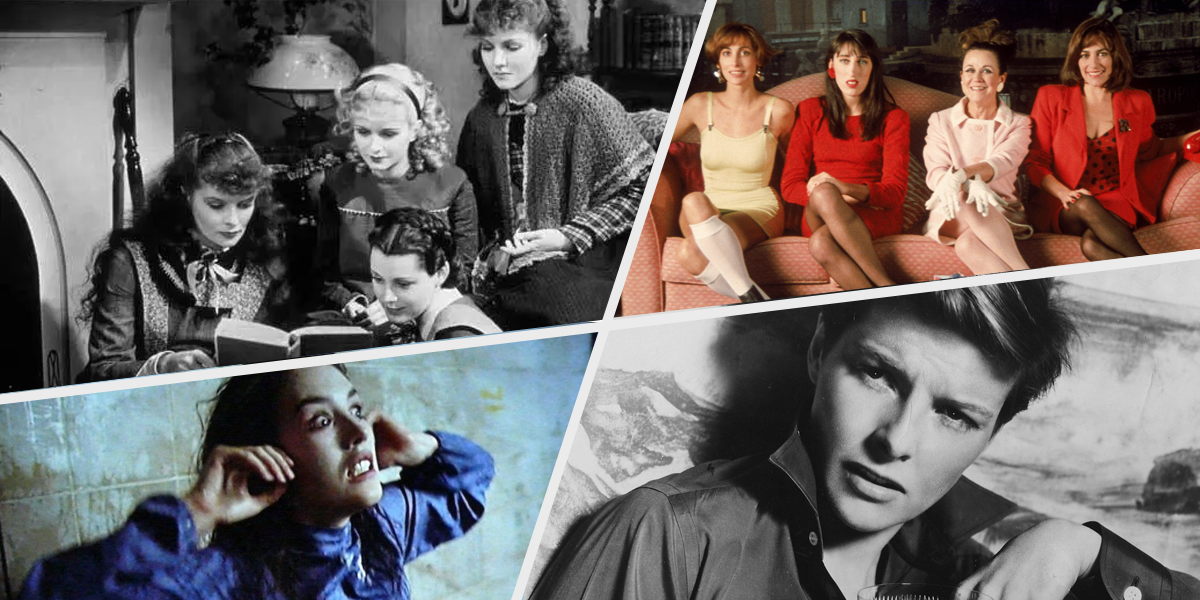I’ll Watch Anything is an Autostraddle TV Team series in which we tell you what type of movies and TV shows we’ll watch, no matter what. This week, Drew Burnett Gregory is here to explain why she’ll watch anything queer made before the year 2000.
I do not find my obsessions — they find me.
Sometimes it’s motivated like when Kirsten Dunst got her first Oscar nomination and I decided to watch all her movies or when I saw a new production of A Raisin in the Sun then spent months with Lorraine Hansberry’s life and work. Sometimes it seems more random like when I set out to fill in my gaps in the filmography of Pedro Almodóvar, a favorite of mine since adolescence.
Regardless of the spark, the real reasons for my obsessions tend to reveal themselves later. Studying Dunst, my longtime paragon of normative femininity, as I confronted the dysphoria of a world reopening. Finding in Hansberry answers — and more questions — to my pressing concern of how to balance personal artistic practice and politics. Re-learning from Almodóvar to ignore queer respectability politics as I embarked on writing a script that might prove controversial in certain corners of the community.
This year my obsessions felt both urgent and discordant. I wanted to watch every film referenced in the main text of Kier-La Janisse’s House of Psychotic Women before reading the book itself and I wanted to watch every George Cukor movie as I read Patrick McGilligan’s biography on the famous gay director. Horror and exploitation movies largely from the 70s and 80s on the one hand, screwball comedies and melodramas from Old Hollywood on the other.
It was only upon writing this essay — almost done with my Cukor project, halfway through my House of Psychotic Women viewing — that I realized their connection to each other and to my moment in time. With Cukor, it’s to study how a queer filmmaker managed to insert his tastes and experiences into work that couldn’t be explicitly gay. With House of Psychotic Women, it’s to study the queer movies made by straight men who aimed primarily to fetishize or villainize, movies that have since been reclaimed by women viewers, queer viewers, and, my personal category, queer women viewers.
It’s a bleak time to be a queer artist, a bleak time to be a queer person. The unfinished progress of the recent decades has started to decline, especially for trans people. There are fewer queer stories being told this year than last. The stories that are being told are more palatable and, largely, worse. All the while, several states are overshadowing any complaints about media by taking steps to outlaw our existence altogether. They will not win. But they will cause harm I wake up every day to mourn.
I make sense of the present by looking at the past. History is my weighted blanket, the heaviness of centuries bringing me calm. I understand people who just want to move forward, who feel there’s enough to worry about today without dwelling on the worries of yesterday. I understand, but I do not agree. I need the reminder that there were people like me, like all of us, who found ways to survive and thrive. I need the reminder that our current problems will pass — while understanding the damage that can be done.
I get something important out of watching Cukor’s 1935 comedy flop Sylvia Scarlett starring a cross-dressing Katharine Hepburn. It’s fascinating to learn that many in Hollywood thought it gauche of Cukor to so explicitly show the queerness they merely tolerated in him. It’s fascinating to see how that shaped the rest of his career, the risks he took and didn’t take, the ways he found to insert queerness more subtly through stories of strong women and creatives tortured by polite society.
I get something quite different from watching a movie like Norman J. Warren’s 1977 alien invasion chamber drama Prey, covered in part 8 of House of Psychotic Women. This is a movie with a several minute long lesbian sex scene — that also suggests dykes are possessive, abusive, and more predatory toward sweet hetero women than aliens with red eyes and sharp teeth. It’s a movie that’s easy to call homophobic. But with nearly 50 years of distance, its charms outweigh its values. The film fails in its critique of lesbianism — the hate too campy, the sex too hot.
I will watch any movie or TV show with queer people made before the year 2000. The older the better. I love to see the work we were managing to make and I love to see the work made about us. I don’t think we’ve changed or straight people have changed as much as we like to think. And, within those changes, and lack of change, there is much to learn.
There is so much great art that has been ignored because it was queer. People have been discovering and re-discovering this work since it was first made. The box office reports for Sylvia Scarlett don’t include the anecdotes of young queers lusting over a short-haired Hepburn. The confused critical response to Prey doesn’t account for women dragged to the exploitation theatre by a horny boyfriend only to burn with desire watching lesbian sex.
These movies had value upon their releases and they have a different kind of value now. There is so much to stumble upon, to seek out. We can take lessons from this older work into our present lives and into the art we make and watch today.
Watch queer film and television from the 20th century and you’ll see a lot of bad — but the treasures, oh the treasures will be plentiful.







